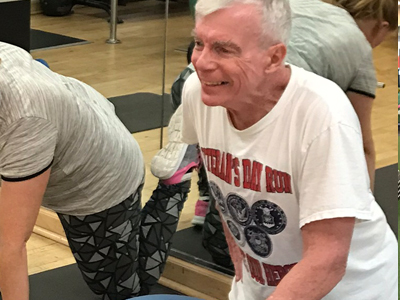In this blog I highlight some of the considerations that need to be acknowledged with aging, offering suggestions how to train the aging body effectively, adapting your routine and habits to forge positive changes.
Training at any age can be a minefield. Knowing and planning what volume, intensity, exercise selection and rest to take. Deciding which group exercise class to take with the complexity of time constraints, availability of classes that suit your range of movement and energy levels, can add to an already stressful life. It can take a while to find a routine that works, whilst being appropriate for the changes the body is undergoing.
Confusion can also arise when looking at nutritional options, with fad diets claiming they can give you the results you desire. One week the media claims something is a superfood, the next we are advised to avoid it.
Aging affects everyone differently, some begin to see changes from 35, others from 45, but generally by 50 everybody is feeling the difference. So what’s going on? The list below isn’t exhaustive but highlights life changing side effects.
- Compression of joints, more notably the spinal discs, so we lose height, and can suffer from nerve and movement issues
- Hormonal changes in men and women
- Sleep time typically becomes shorter, and quality decreases
- Bone minerals are lost, causing bones to become more fragile
- The basal metabolic rate slows, often resulting in weight gain – mostly fat, caused by loss in muscle mass
- Growth hormone decreases
- Aerobic capacity (V02) declines
- Maximal heart rate declines
- Blood volume and blood volume pumped with each heartbeat decreases
These changes can lead to chronic illnesses such as diabetes and cancer, but for most they just mess up existing routines that in the past successfully worked to maintain a healthy body composition, and a wide range of movement. Sadly things change, and what used to do the trick slowly becomes less effective.
However, there are ways of training your body, and tuning into your nutritional habits to assist the body’s autonomic, skeletal and muscular systems, and to control what happens to us as we age.
You can not halt the process of aging, but you can certainly work with it. Both men and women could benefit from following a few simple steps:
- Focus on a high protein diet, between 1 to 1.2 grams per kg per day. For example, a 55kg women, would require to eat between 55g to 66g of protein per day. A male of 70kg would need to eat 70g to 84g of protein per day. (Note large amounts of protein can not be processed in one go, so you need to spread the intake over the day, between 20 – 30g for the average person, per meal).
- As you will be increasing your protein intake you will have to reduce your calories from the other food groups, so reducing carbohydrates would be a good place to start. Most foods contain a certain amount of carbs, enough to sustain a healthy diet. Best to cut out processed carbs and alcohol.
- Ensure you include as much variety in your diet as possible, eat the “vegetable rainbow”. Include broccoli, cauliflower, radishes, cabbage, kale for example, they will help to take excess estrogen out of the body, and other undesirables, helping balance hormone levels.
- Look after your body, muscles become tight from a life of sitting in a car, at a desk, sleeping in weird positions, pay more attention to your posture, deal with knotty muscles and stretch.
- Lifting heavy weights will recruit more muscle fibers, this means your engine will be firing on more cylinders, and the basal metabolic rate will be increased, and performance!
- Lifting weights also stimulates the body to maintain, or gain strength. If correct training protocols are followed.
- Don’t keep the same workout routine. The body learns to absorb stress. It will get used to the stress, and cease to change. If the challenge continues, the body has to adapt to the new stimulus, so think about changing things up every 4 to 6 weeks.
- A balanced approach to exercise should be taken, combining strength, cardio, flexibility with plyometric training.
You don’t have to be a monk and restrict yourself from unhealthy nutrition, just be good 80% of the time, remember if you indulge Friday, Saturday and Sunday that’s only 57% of the time being good!
These tips are designed to help craft your behaviours to enhance your health as you age, understanding your body’s requirements is a huge step in the right direction. If you want to discuss any of these points further do reach out to me at libertytraining@gmail.com.
References

